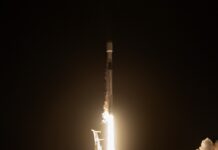Title: Tiny Satellites, Also Known as CubeSats, Deployed from the International Space Station
Tiny satellites, commonly referred to as CubeSats, have been successfully deployed into orbit around Earth from a small satellite orbital deployer situated on the exterior of the International Space Station’s (ISS) Kibo laboratory module. These CubeSats, delivered by the Northrop Grumman Cygnus space freighter, are set to serve a multitude of educational and research purposes for both public and private organizations globally.
What are CubeSats?
CubeSats are miniature satellites designed for space research that typically measure 10x10x10 cm and weigh about 1.33 kilograms. Despite their small size, they are fully functional satellites capable of performing a wide range of missions. CubeSats are often used for scientific research, technology demonstration, and educational purposes due to their cost-effective nature.
Deployment from the ISS
The deployment of these CubeSats was executed from the Kibo laboratory module, a Japanese Experiment Module on the ISS. Kibo, which means "hope" in Japanese, is Japan’s first human-rated space facility and plays a crucial role in housing various scientific experiments and technologies. The ISS serves as a unique platform for deploying such satellites, providing an advantageous position due to its low Earth orbit.
Delivery by Cygnus Space Freighter
The Northrop Grumman Cygnus space freighter was responsible for delivering these CubeSats to the ISS. The Cygnus spacecraft is an uncrewed cargo spacecraft developed to transport supplies to the ISS under NASA’s Commercial Resupply Services (CRS) program. This mission underscores the increasing role of commercial entities in supporting space exploration and research.
Educational and Research Benefits
CubeSats offer a plethora of benefits for educational and research institutions. Universities and schools can engage in hands-on space projects, allowing students to gain practical experience in satellite design, development, and operation. For research organizations, CubeSats provide an affordable means to conduct experiments and gather data in space. The information collected can be used for various applications, including climate monitoring, disaster management, and telecommunications.
Technical Aspects Simplified
To put it simply, CubeSats are like tiny robots sent into space to perform specific tasks. They can take pictures, collect data, and even test new technologies. Because they are small and cost less to build and launch compared to traditional satellites, they make space research more accessible to smaller institutions and countries with limited budgets.
The Role of the ISS
The International Space Station (ISS) is a collaborative effort involving space agencies from the United States (NASA), Russia (Roscosmos), Japan (JAXA), Europe (ESA), and Canada (CSA). The ISS orbits the Earth at an altitude of approximately 400 km, providing a unique vantage point for scientific research and satellite deployment. The Kibo module, in particular, is equipped with facilities for conducting various scientific experiments in microgravity and deploying small satellites like CubeSats.
Reactions and Reviews
The deployment of CubeSats from the ISS has been met with enthusiasm from both the scientific community and educational institutions. Researchers are excited about the potential data these tiny satellites will gather, which could lead to significant advancements in various fields. Educational institutions are equally thrilled, as the hands-on experience with CubeSats provides students with invaluable insights into space technology and engineering.
Why is this Important?
The deployment of CubeSats represents a significant step in democratizing access to space. By lowering the cost and complexity of satellite missions, CubeSats enable more players to participate in space research and exploration. This democratization fosters innovation and accelerates the pace of scientific discovery, benefiting society as a whole.
Good to Know Information
- CubeSats Standardization: CubeSats are standardized, meaning they have a uniform size and shape, which simplifies their design and deployment processes. This standardization has led to a surge in the number of CubeSat missions, as it reduces the cost and time required to develop a satellite.
- Collaborative Missions: Many CubeSat missions are collaborative efforts between multiple institutions and countries. This international collaboration enhances the quality and scope of the research conducted, leveraging diverse expertise and resources.
- Technological Innovations: CubeSats often serve as testbeds for new technologies. For example, they can carry innovative instruments or experiment with new propulsion systems, contributing to advancements in space technology that can be scaled up for larger missions.
- Environmental Monitoring: CubeSats play a crucial role in monitoring environmental changes on Earth. They can track deforestation, monitor ocean health, and measure atmospheric conditions, providing valuable data for addressing climate change and environmental degradation.
Conclusion
The recent deployment of CubeSats from the International Space Station’s Kibo laboratory module marks a significant milestone in space exploration and research. Delivered by the Northrop Grumman Cygnus space freighter, these tiny satellites will support a wide range of educational and research initiatives worldwide. By making space more accessible, CubeSats are democratizing space research, fostering innovation, and accelerating scientific discovery. Whether for educational purposes or cutting-edge research, CubeSats are proving to be a game-changer in the realm of space technology.
For more Information, Refer to this article.


































